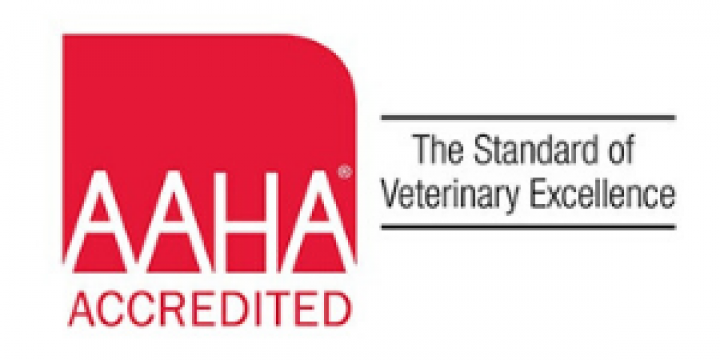
Nutrition is the basis of good health and longevity. To determine if a food meets your pet’s nutritional requirements, you must know what’s in their diet. Pet food packaging labels outline ingredients and provide crucial information on nutrition standards. However, deciphering the information these labels provide may have you scratching your head. Understanding what you put into your pet’s bowl is vital for your furry pal’s health and well-being. Our Tennessee Avenue Animal Hospital team unravels the mystery behind pet food labels, empowering you to make informed decisions about your pet’s diet.
The Association of American Feed Control Officials and pet food labels
The Association of American Feed Control Officials (AAFCO) is a volunteer-based nonprofit organization composed of government officials and pet food manufacturer representatives. These individuals are responsible for setting nutritional standards for livestock feed and pet food. For example, the AAFCO regulates terms, such as “complete and balanced,” on your pet’s food package. Any pet food you purchase should have an AAFCO label; however, keep in mind that the AAFCO only sets the minimum requirements for pet food and does not guarantee the highest quality.
Pet food label components
Pet food label components include the manufacturer’s product descriptions and required labels such as those that outline the nutritional values, ingredients, product weight, and other information. The following list provides a pet food label information overview:
- Product name — The product name emphasizes the primary ingredients in the pet food. For example, “chicken dog food” should contain mostly chicken. The AAFCO requires what is known as the 95% and 25% rules. If a manufacturer lists a whole ingredient in their product name, the ingredient must make up 95% of the pet food. If terms such as “dinner” or “entree” appear next to the primary ingredient, 25% of the total meal weight should include those ingredients. Diets that are higher in quality ingredients are better, so avoid foods that use terms such as “dinner” or “entree.”
- Ingredient list — The ingredient list is a window into the contents of your pet’s food. Ingredients are listed in descending order by weight, with the primary ingredient being the most abundant. Look for named meat sources, such as “chicken,” “beef,” or “salmon,” at the top, which indicates high-quality protein sources.
- Guaranteed Analysis — This section provides the minimum percentages of the food’s crude protein, crude fat, crude fiber, and maximum moisture. The term “crude” is not derogatory but implies the ingredients’ essential requirement. While the Guaranteed Analysis offers a glimpse into a pet food’s nutritional composition, you need to consider these nutrients’ quality rather than solely focusing on quantity.
- Nutritional Adequacy Statement — Also known as the AAFCO Statement, this pet food label component indicates whether the food meets pets’ minimum dietary requirements. Look for statements, such as “complete and balanced” for all life stages or “for adult maintenance,” to meet your pet’s nutritional needs. Puppies and kittens require additional vitamins and nutrients to support their rapid development, and the Nutritional Adequacy Statement ensures the basic dietary needs at pets’ different life stages. Purchase a food suitable for your pet’s life stage to ensure they receive the nutrients they require to stay healthy and prevent malnutrition.
- Feeding instructions — Instructions regarding the amount you should feed your pet daily are based on their weight but do not consider age, health, breed, or exercise level. Because these instructions are vague, we recommend you discuss your pet’s daily food requirements with our Tennessee Avenue Animal Hospital veterinarian.
A word to the wise: Pet food terminology

As you select your pet’s food, you may be persuaded to buy a product based on the brand’s marketing. Branding terms are not strictly regulated, so we recommend researching before choosing a pet food based on wording alone. Be wary of the following common promotional terms:
- Natural — While this term implies that the food contains no artificial additives or preservatives, you need to scrutinize the ingredient list to fully understand which of the food’s components are natural.
- Organic — Organic pet foods are made from ingredients grown without synthetic fertilizers or pesticides. However, certification standards may vary, so look for labels certified by reputable organizations such as the U.S. Food and Drug Administration (USDA).
- Grain-free — Grain-free diets exclude grains, such as wheat, corn, and rice, catering to pets with grain sensitivities or specific dietary preferences. However, ensure that grain substitutes offer adequate nutritional value and aren’t merely filler ingredients. Most pets can consume healthy grains, which provide important carbohydrates and other nutrients essential for energy.
- By-products — By-products are secondary products derived from processing primary ingredients. While the term may evoke negative connotations, high-quality by-products can provide valuable nutrients for your pet that cannot be achieved through pure muscle meat.
Understanding your pet’s food label can help you determine which food is most nutritious for your furry pal. If you have questions or concerns about your pet’s food, contact our Tennessee Avenue Animal Hospital team so we can tailor your pet’s diet to their specific needs and preferences.

